In today’s competitive business landscape, selecting the right Customer Relationship Management (CRM) platform is pivotal for driving growth and maintaining strong customer relationships. Two industry giants, HubSpot and Salesforce, consistently emerge as top contenders, each offering a suite of robust features tailored to different business needs. This comprehensive comparison delves into the strengths, weaknesses, and unique offerings of HubSpot and Salesforce, providing you with the insights needed to make an informed decision for your email marketing and CRM strategies.
Key Facts
- HubSpot: Known for its user-friendly interface and a free CRM option, making it ideal for small to mid-sized businesses.
- Salesforce: Offers extensive customization and advanced AI capabilities, catering to large enterprises with complex needs.
- Both platforms provide comprehensive suites, including sales, marketing, and service tools, but they differ in scalability and ease of use.
Hidden Gems in HubSpot vs Salesforce Integration
While HubSpot and Salesforce are well-known for their primary functionalities, several lesser-known strategies—referred to as “hidden gems”—can significantly enhance their integration and effectiveness. Here are five highly effective, yet often overlooked, strategies:
- Leverage HubSpot’s “Auto-added from Salesforce” List: When integrating HubSpot and Salesforce, utilize the automatically created “Auto-added from Salesforce” list in HubSpot. This ensures that contacts created in Salesforce continue to sync with HubSpot, even if they don’t meet your standard inclusion criteria.
- Implement a Pilot Phase for Integration: Before rolling out a full-scale integration, start with a pilot phase. This controlled approach allows you to test the HubSpot-Salesforce integration, gather feedback, and make necessary adjustments, ensuring a smoother transition.
- Use HubSpot’s Bi-directional Salesforce Integration: Take advantage of HubSpot’s bi-directional integration with Salesforce to ensure seamless data flow between the two platforms. This keeps both systems up-to-date and reduces the risk of data discrepancies.
- Utilize HubSpot’s Intelligent Active Lists for Salesforce: HubSpot’s intelligent active lists can automatically update which contacts in Salesforce are ready for purchase. This enhances sales team efficiency by ensuring they focus on the most promising leads.
- Leverage HubSpot’s A/B Testing for Salesforce Campaigns: Utilize HubSpot’s A/B testing features to optimize email marketing campaigns that are synced with Salesforce. This can lead to improved campaign performance and higher engagement rates.
HubSpot vs Salesforce: Feature-Rich Giants in a Head-to-Head Battle
User Interface and Ease of Use
HubSpot is celebrated for its intuitive and user-friendly interface, making it accessible to teams without extensive technical expertise. According to CRM.org, “HubSpot is renowned for its simple, intuitive user interface, making it easy for teams to adopt and navigate the platform.” Features like drag-and-drop editors for creating emails, forms, and landing pages enhance its user-friendly reputation.
In contrast, Salesforce’s interface is more complex, reflecting its vast array of features and customization options. While this complexity can be daunting for beginners, it offers unparalleled flexibility for businesses with specific and intricate needs.
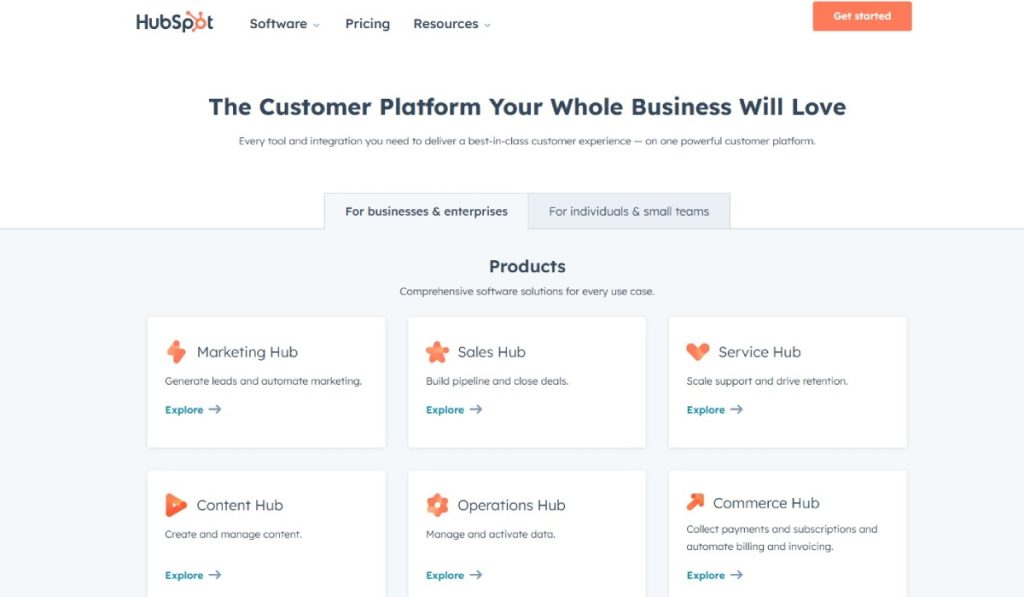
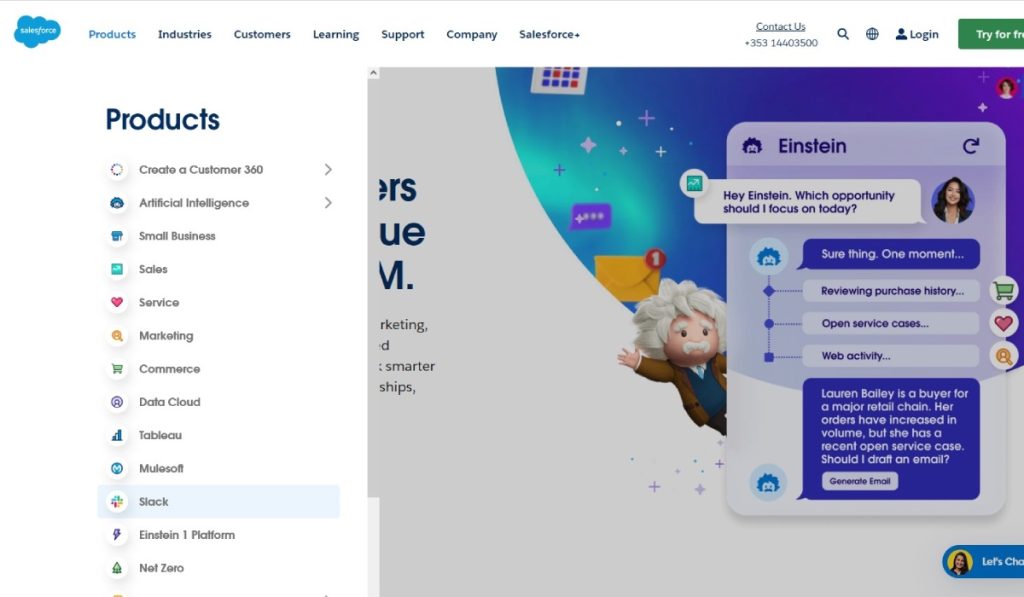
Customization and Scalability
Salesforce stands out with its extensive customization options and powerful AI capabilities. As Business.com notes, “Salesforce offers an extensive suite of CRM features, suitable for large-scale operations.” This makes it a preferred choice for large enterprises with complex sales processes and the need for advanced analytics.
Businesses can tailor almost every aspect of Salesforce, from custom fields and objects to complex workflow rules and approval processes. This level of customization enables the creation of a truly bespoke CRM solution.
HubSpot, while offering significant flexibility, focuses more on providing a comprehensive out-of-the-box solution that requires less customization. Users can create custom properties, deal stages, and reports, but the emphasis is on ease of use and quick implementation.
Automation Capabilities
Both HubSpot and Salesforce offer robust automation tools, but they approach automation differently. HubSpot’s Sales Automation automates tasks like follow-up emails and call scheduling, allowing sales teams to focus on personalized interactions. This automation is intuitive and easy to set up, making it accessible even to those without technical expertise.
Salesforce takes automation a step further with its Einstein AI, which offers advanced automation tools powered by artificial intelligence. Einstein AI can predict outcomes, recommend next best actions, and automate complex workflows based on vast amounts of data, streamlining intricate sales processes.
Pricing Models
Pricing is a critical factor when choosing between HubSpot and Salesforce. HubSpot offers a free CRM that includes contact management, email tracking, and live chat functionalities. Its paid plans start at $30 per month, making it an attractive option for budget-conscious businesses. The pricing model is straightforward, with clearly defined tiers that include specific features, allowing businesses to easily choose the right plan for their needs and budget.
Salesforce, while more expensive with plans starting at $25 per user per month, justifies its cost with advanced features and scalability. However, the pricing structure can be more complex, with different editions and add-ons that can significantly increase the overall cost.
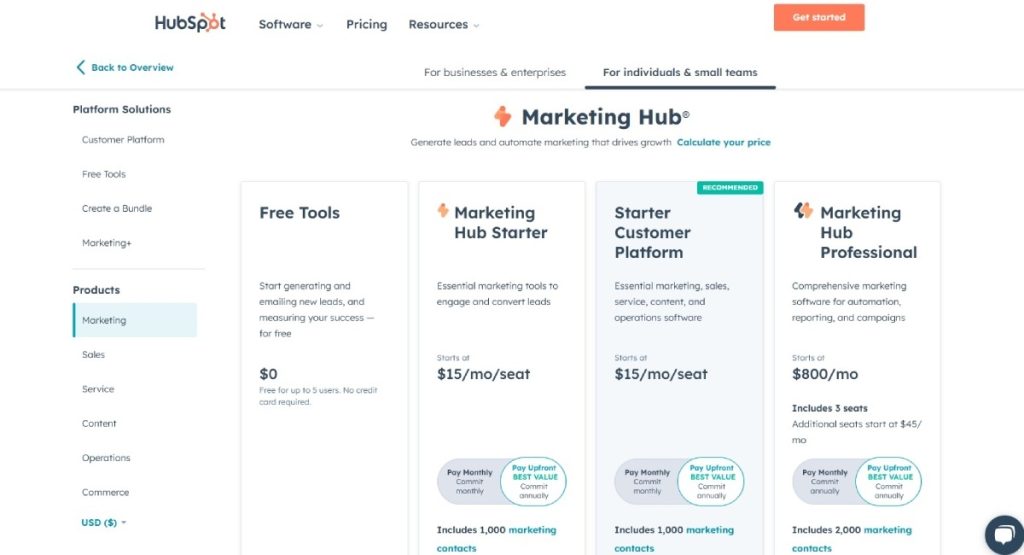
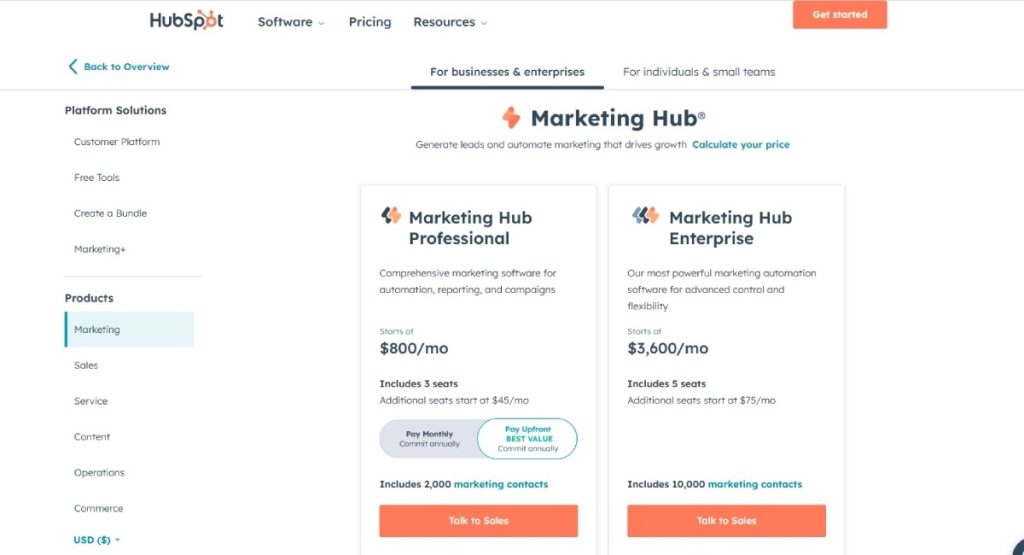
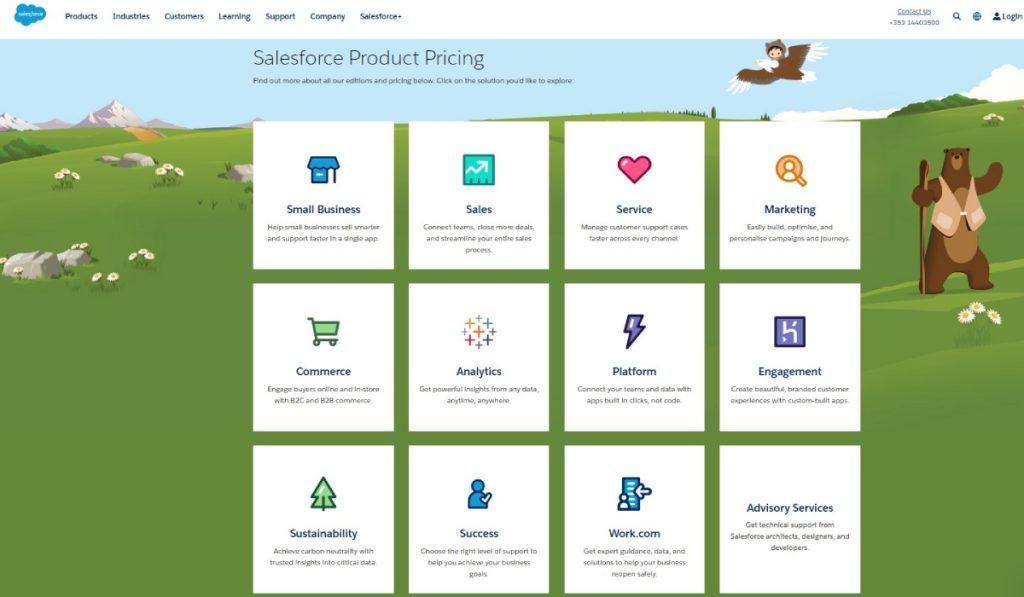
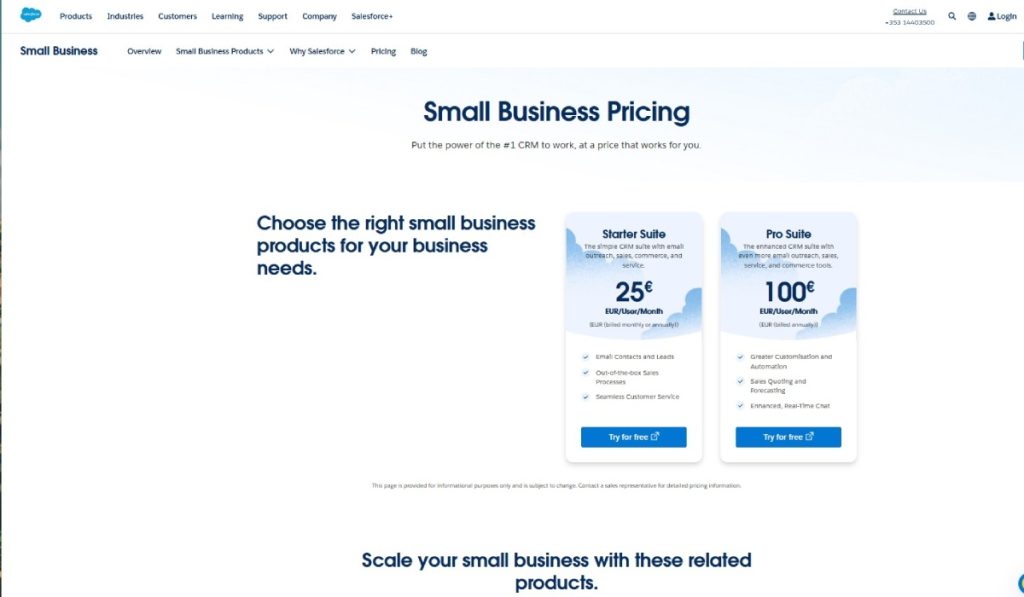
Integration Capabilities
Integration capabilities are robust in both platforms, but Salesforce leads with its AppExchange, offering over 4,500 third-party apps for integration. This vast ecosystem allows businesses to extend Salesforce’s functionality in almost any direction, from accounting and project management to advanced analytics and AI tools.
HubSpot supports over 1,000 integrations, which is sufficient for most small to mid-sized businesses. The platform’s focus on providing a comprehensive all-in-one solution means that many businesses may require fewer integrations overall.
Implementation and User Adoption
HubSpot has a clear advantage in terms of user adoption and implementation. As Tech.co points out, HubSpot is “Easy to implement and quick to set up, ideal for businesses without extensive IT resources.” This ease of implementation can lead to faster adoption rates and quicker time-to-value for businesses.
Salesforce, while powerful, often requires more time and resources to fully implement and customize to a business’s specific needs. Many large enterprises employ dedicated Salesforce administrators or consultants to manage and optimize their Salesforce instance.
Salesforce, while more expensive with plans starting at $25 per user per month, justifies its price with advanced features and scalability. However, the pricing structure can be more complex, with different editions and add-ons that can significantly increase the overall cost.
Innovative Solutions by Prism Reach
While HubSpot and Salesforce dominate the CRM landscape, innovative solutions like Prism Reach are revolutionizing specific aspects of customer engagement, particularly in email marketing and newsletter personalization. Prism Reach’s AI-powered platform offers a unique approach to creating highly personalized newsletters, complementing the CRM functionalities of both HubSpot and Salesforce.
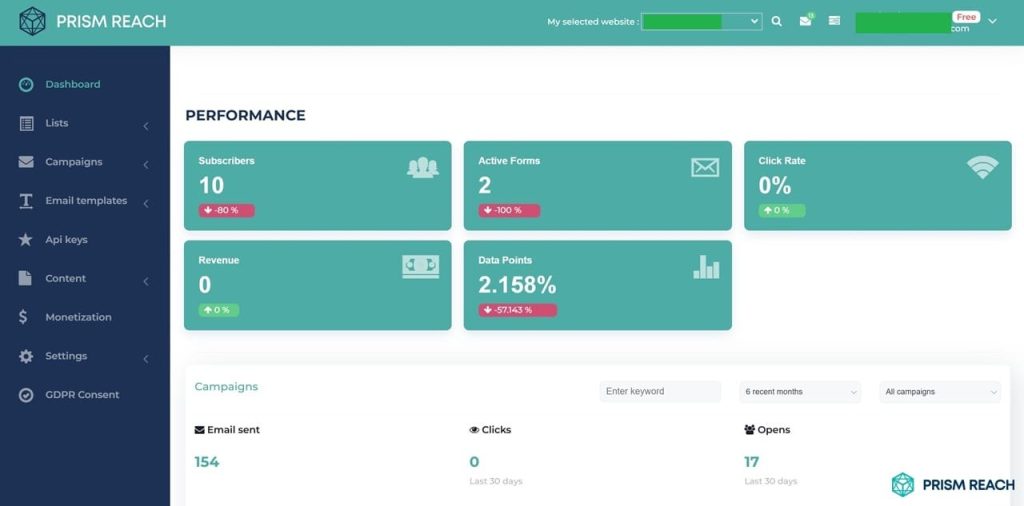
Key Features of Prism Reach
- AI-Powered Personalization: Utilizes advanced AI algorithms to customize newsletters based on subscriber behavior and preferences.
- Seamless Setup and Integration: Quick setup and one-click uploads make it easy to integrate with existing systems.
- Dynamic Content Selection: Automatically selects the most relevant content for each subscriber, enhancing personalization.
- Advertising Network and Swap Network: Facilitates targeted advertising and mutual promotion among publishers.
- Advanced AI Features: Includes anti-spam checks and high deliverability to maintain engagement levels.
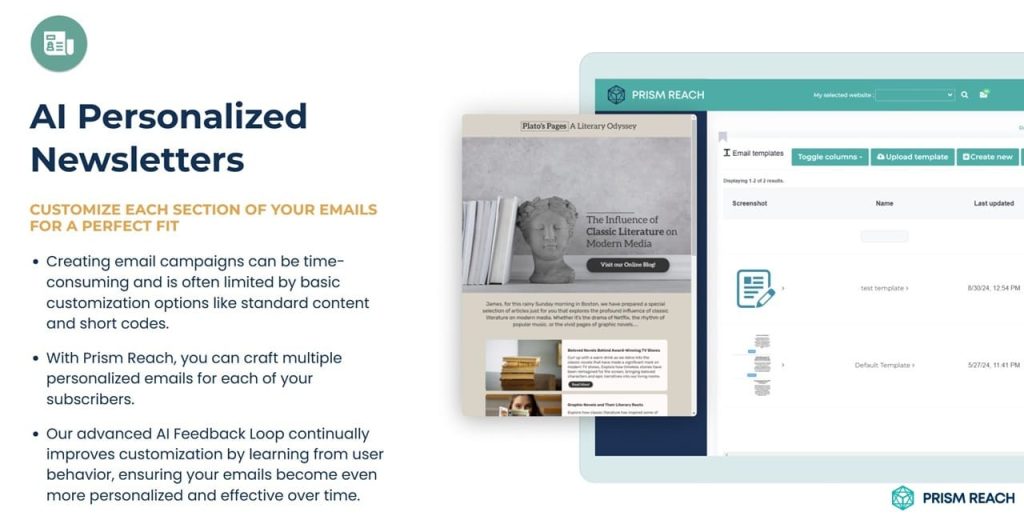
Benefits of Prism Reach Relevant to HubSpot and Salesforce Users
- Increased Engagement: Publishers report up to 40% higher engagement rates due to the personalized nature of the content. Prism Reach leverages advanced AI algorithms to analyze subscriber behavior and preferences in real-time. By clustering website content and social media posts into relevant categories, Prism Reach creates detailed user avatars that enable highly targeted newsletter content. This deep personalization ensures that each subscriber receives content tailored to their specific interests and needs, resulting in higher open rates, click-through rates, and overall engagement. Additionally, Prism Reach’s predictive analytics identify the types of content that resonate most with each segment, allowing for continuous optimization of email campaigns.
- Higher Revenue: Tailored advertising and efficient content targeting lead to higher monetization rates for published newsletters. Prism Reach’s dynamic content selection automatically inserts the most relevant advertisements and promotional materials based on each subscriber’s profile and behavior. This targeted approach increases the likelihood of ad interactions and conversions, directly boosting revenue. Furthermore, Prism Reach’s advertising network and swap network facilitate strategic ad placements and mutual promotions among publishers, expanding reach and enhancing monetization opportunities. The platform’s detailed analytics also provide insights into which ads perform best, enabling publishers to refine their advertising strategies for maximum financial impact.
- Improved Productivity: Automation and AI-driven insights significantly reduce the time required to create and manage campaigns. Prism Reach automates the entire content curation process, from selecting relevant articles to generating personalized introductions for each subscriber. This automation frees up marketers to focus on strategic planning and creative tasks rather than manual content management. Additionally, Prism Reach’s seamless integration with HubSpot and Salesforce ensures that data flows smoothly between systems, minimizing the need for manual data entry and reducing the risk of errors. The platform’s intuitive dashboard and one-click upload features further streamline campaign setup and execution, enhancing overall productivity and allowing teams to launch effective email campaigns more efficiently.
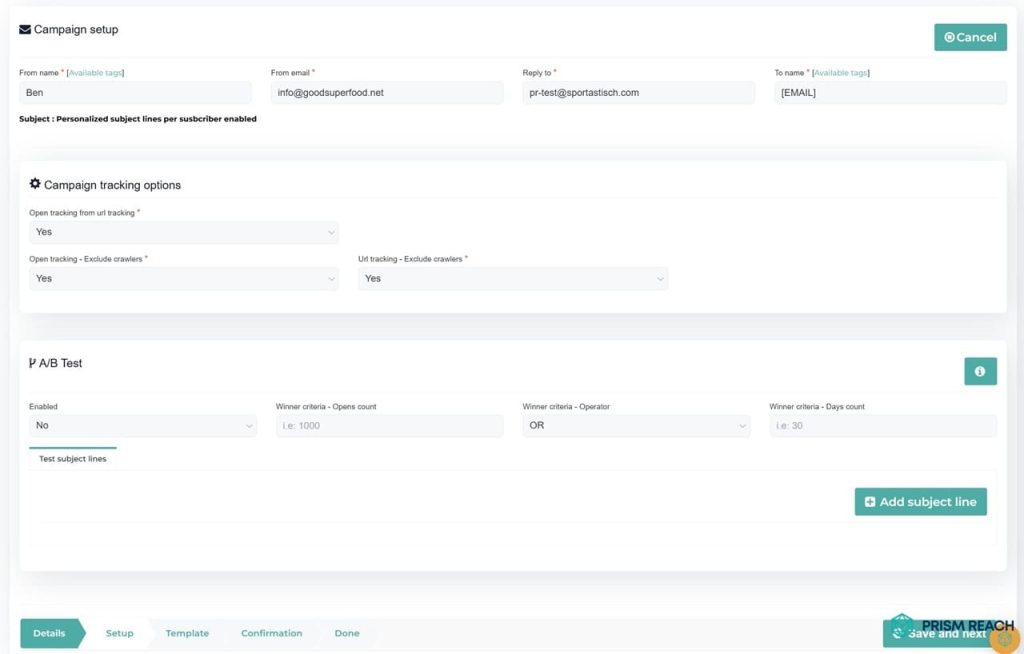
Practical Tips for Email Marketing with HubSpot and Salesforce
Effective email marketing requires a strategic approach that leverages the strengths of your chosen CRM platform. Whether you opt for HubSpot or Salesforce, integrating Prism Reach can enhance your email marketing efforts through advanced personalization and automation. Here are some practical tips:
1. Optimize Your Contact Lists
Ensure your contact lists are well-organized and segmented. Utilize HubSpot’s “Auto-added from Salesforce” list to keep contacts in sync automatically, even if they don’t meet your standard inclusion criteria. This ensures a comprehensive and up-to-date contact database.
2. Implement Pilot Phases for New Campaigns
Before launching full-scale email campaigns, implement a pilot phase. This allows you to test the integration between HubSpot and Salesforce, gather feedback, and make necessary adjustments. A pilot phase can help identify potential issues early, ensuring a smoother rollout.
3. Leverage Bi-directional Integration
Use HubSpot’s bi-directional Salesforce integration to ensure seamless data flow between marketing and sales teams. This integration keeps both systems up-to-date, enabling better alignment and more effective email marketing campaigns.
4. Utilize Intelligent Active Lists
HubSpot’s intelligent active lists can automatically update which contacts are ready for purchase. By identifying these contacts, you can target your email marketing efforts more effectively, ensuring your sales team focuses on the most promising leads.
5. Conduct A/B Testing
Leverage HubSpot’s A/B testing features to optimize your email campaigns. Test different subject lines, content formats, and send times to determine what resonates best with your audience. Continuous testing and optimization can significantly improve your campaign performance.
User Experience Enhancements
Enhancing user experience is crucial for successful email marketing. Here are three sections where integrating lists and bullet points can improve readability and engagement:
Key Features Comparison
- HubSpot: User-friendly interface, free CRM option, integrated marketing tools, drag-and-drop editors.
- Salesforce: Extensive customization, advanced AI capabilities, vast AppExchange ecosystem, robust analytics.
- Prism Reach: AI-powered personalization, seamless integration, dynamic content selection.
Hidden Gems Strategies
- Leverage auto-added lists for seamless syncing.
- Implement pilot phases for controlled integration testing.
- Use bi-directional integrations for consistent data flow.
- Utilize intelligent lists to identify ready-to-purchase contacts.
- Conduct A/B testing to optimize campaign performance.
Benefits of Prism Reach
- Increased engagement through personalized content.
- Higher revenue via targeted advertising.
- Improved productivity with automated campaign management.
Integration and Support
Both HubSpot and Salesforce offer robust integration capabilities, but they cater to different needs. Salesforce’s AppExchange provides an extensive library of third-party applications, allowing businesses to customize their CRM experience extensively. HubSpot, while offering fewer integrations, focuses on providing a seamless all-in-one solution that requires fewer external tools.
Prism Reach complements these platforms by offering specialized email marketing solutions. Its integration with HubSpot and Salesforce ensures that your email campaigns are not only personalized but also seamlessly aligned with your CRM data. This synergy enhances overall marketing effectiveness and customer engagement.
Compliance and Data Privacy
Data privacy is paramount in today’s digital age. Prism Reach emphasizes GDPR compliance and hosts data within Europe, adhering to the highest standards of data protection. Both HubSpot and Salesforce also prioritize data security, offering various features to ensure your customer data is protected and compliant with international regulations.
Future Prospects
As technology evolves, so do the capabilities of CRM platforms and email marketing tools. HubSpot and Salesforce continue to innovate, adding new features and integrations to meet the growing demands of businesses. Prism Reach is poised to expand its AI-driven personalization capabilities, further enhancing its value proposition for email marketing professionals.
Upgrade Your Email Marketing with AI Personalization!
FAQ
Conclusion
Choosing between HubSpot and Salesforce depends largely on your business’s specific needs, budget, and growth trajectory. HubSpot shines as an intuitive, all-in-one CRM solution ideal for small to mid-sized businesses seeking ease of use and affordability. Its user-friendly interface and comprehensive free tier make it an excellent choice for companies embarking on their CRM journey.
Salesforce, on the other hand, excels in providing extensive customization and advanced AI capabilities, making it the preferred choice for large enterprises with complex requirements. Its robust ecosystem and scalability support ambitious growth plans and intricate sales processes.
Regardless of your choice between HubSpot and Salesforce, integrating innovative solutions like Prism Reach can significantly enhance your email marketing efforts. Prism Reach’s AI-powered personalization, automation, and dynamic content selection complement the strengths of both CRM platforms, leading to higher engagement rates, increased revenue, and improved productivity.